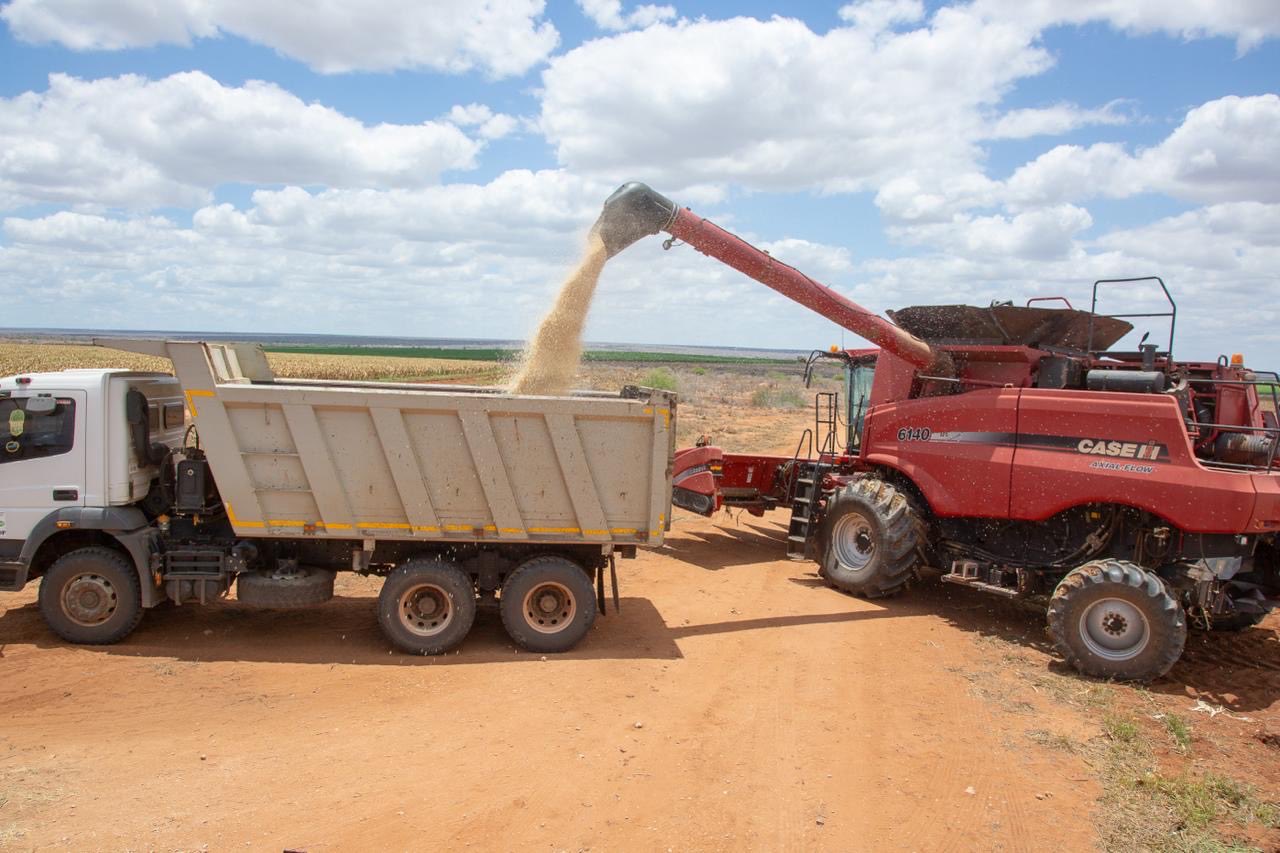
Harvesting of the first maize crop at the Galana Kulalu
Irrigation Scheme began on Saturday, marking a significant turnaround for a
project that was widely dismissed as a failure just two years ago.
The Galana Kulalu Food Security Project, located on vast government land straddling Kilifi and Tana River counties, is being implemented under a public-private partnership (PPP) between the government and Selu Limited.
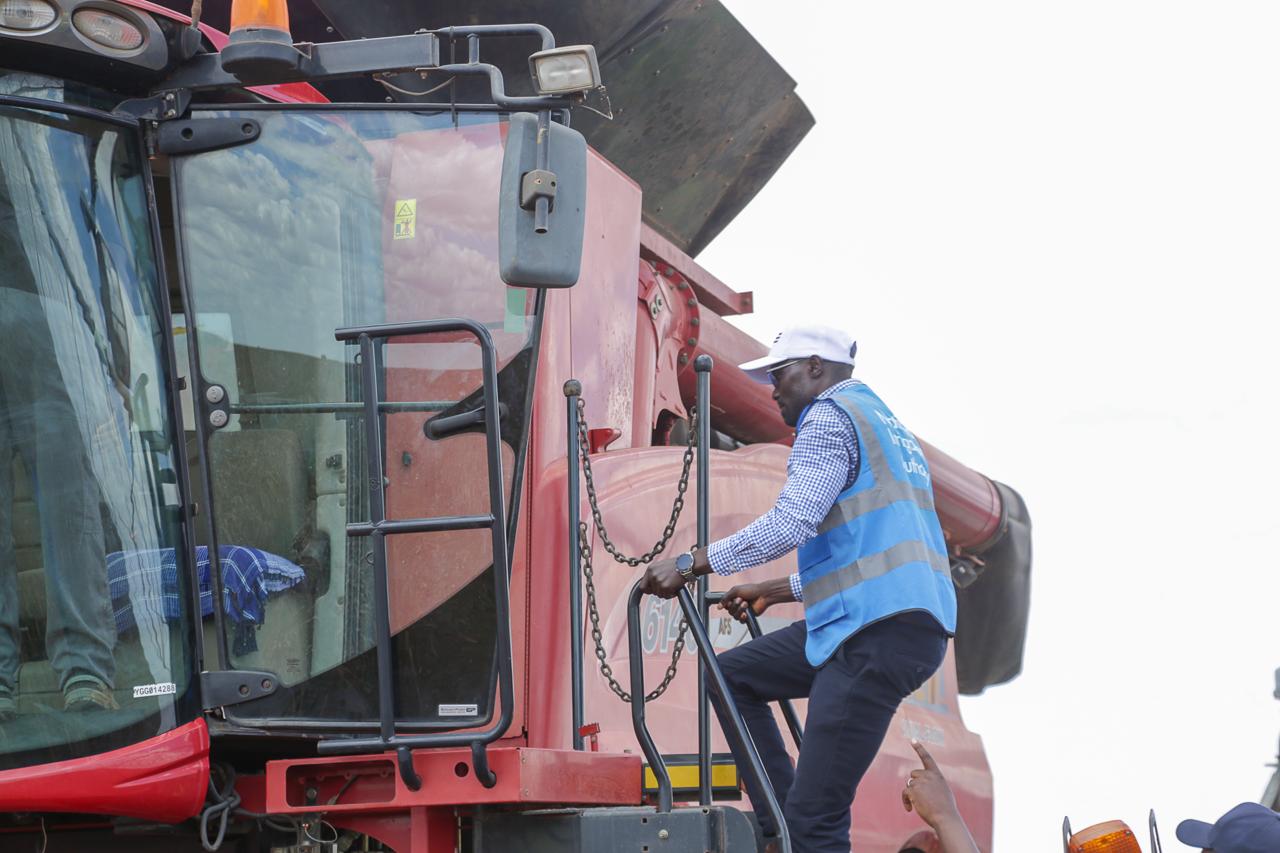
From the first 1,500 acres of seed maize planted, yields
have averaged between 28 and 30 bags per acre, an outcome that government
officials say demonstrates the potential of irrigation-based food production in
arid and semi-arid areas.
The revival follows major government investment in irrigation infrastructure, including a 20,000-cubic-metre intake well, a 2-kilometre water canal, a 550,000-cubic-metre reservoir, and a 20,000-cubic-metre offtake pump that now supplies the initial farms.
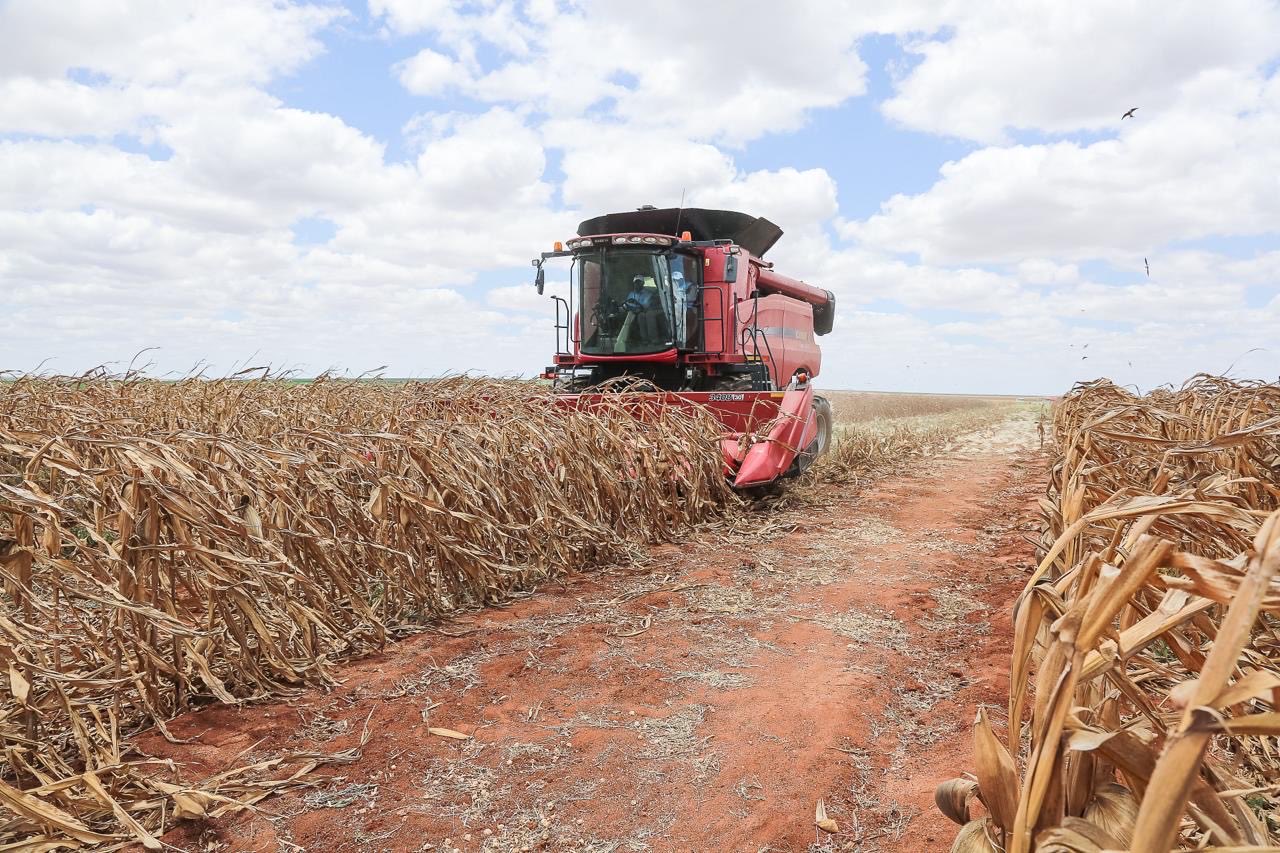
Speaking during the start of the harvest, Water, Sanitation
and Irrigation Cabinet Secretary Eric Mugaa said the scheme is on course to
become a major food production hub and a key pillar of Kenya’s food security
agenda.
“The Galana Kulalu project is on track to become a food hub for Kenya, supporting the government’s Bottom-Up Economic Transformation Agenda to make the country food secure and reduce the KSh500 billion annual food import bill,” said Mugaa.
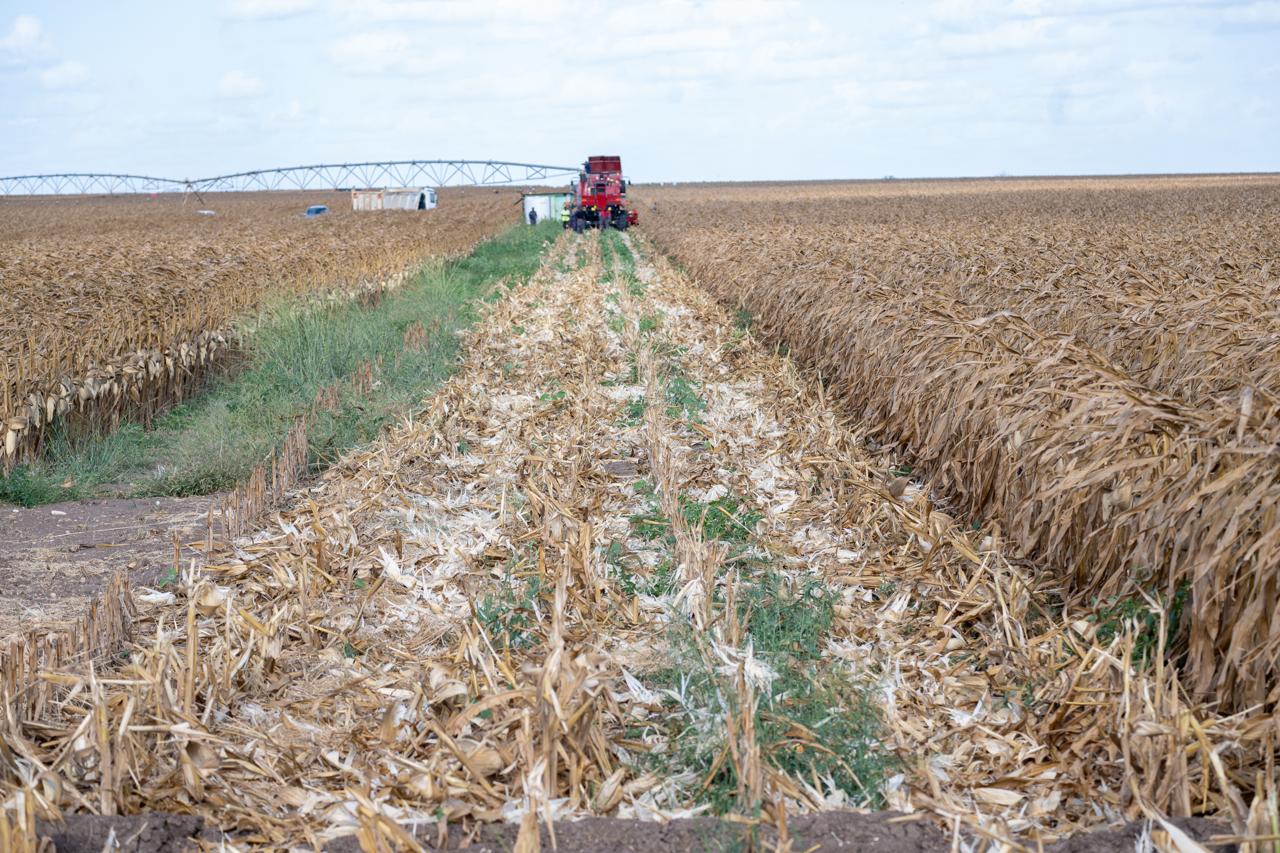
“The first crop we
are harvesting today is evidence of that commitment.”
The CS noted that 330 acres of the current crop will be
harvested over the next five days. He added that with the water already
available from two small dams, Selu Limited will soon be able to irrigate 6,300
acres.
“However, the long-term plan is to build a large dam in
Galana capable of irrigating 200,000 acres, ensuring sustainable national food
production,” Mr Mugaa said.
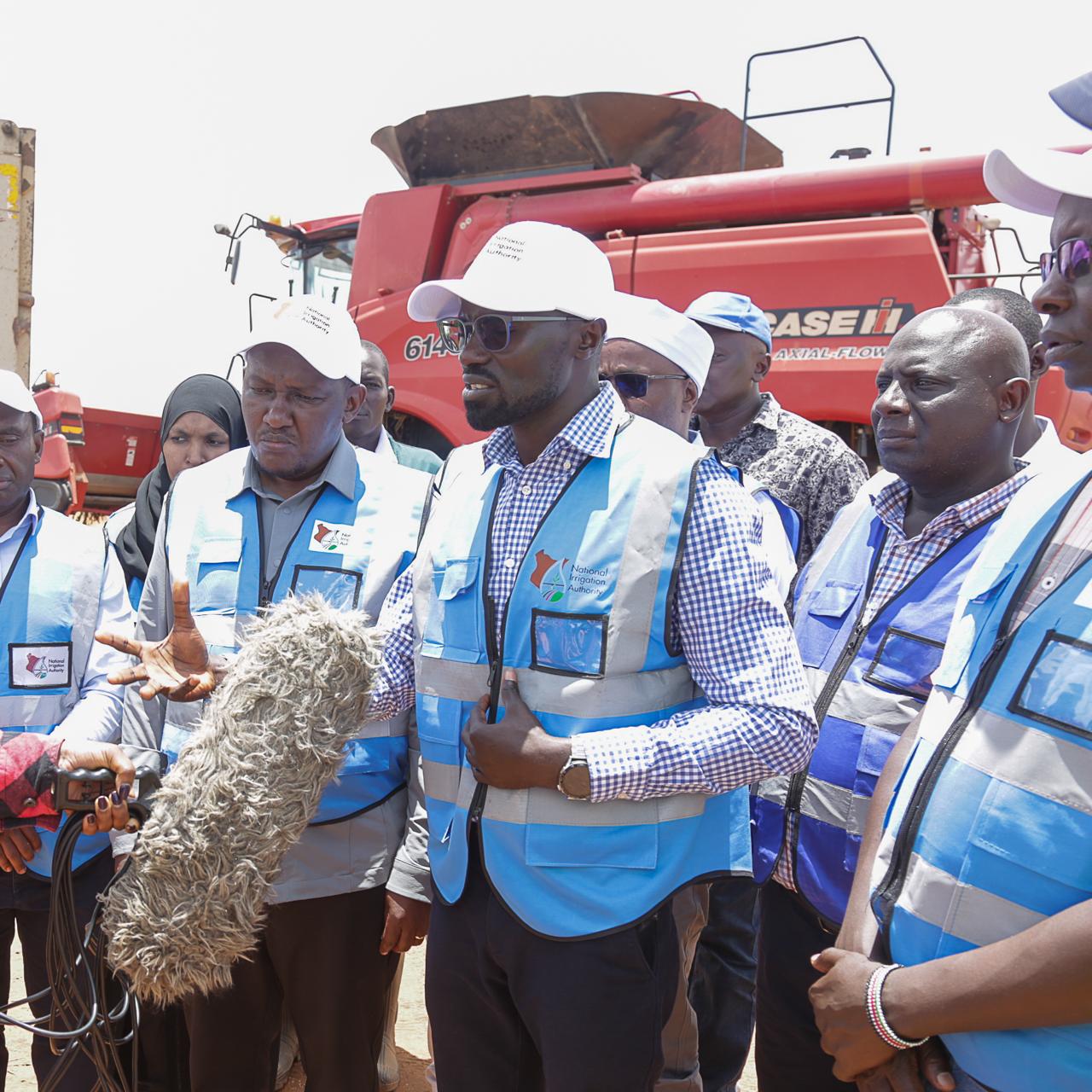
Expansion and job creation
Selu Limited CEO Nicholas Ambanya said the company plans to
expand the area under cultivation to 3,200 acres by the end of 2025 and 5,400
acres by June 2026, eventually reaching 20,000 acres as more irrigation water
becomes available.
“The project has already created about 200 jobs, and more Kenyans will be employed as we expand production,” Ambanya said.
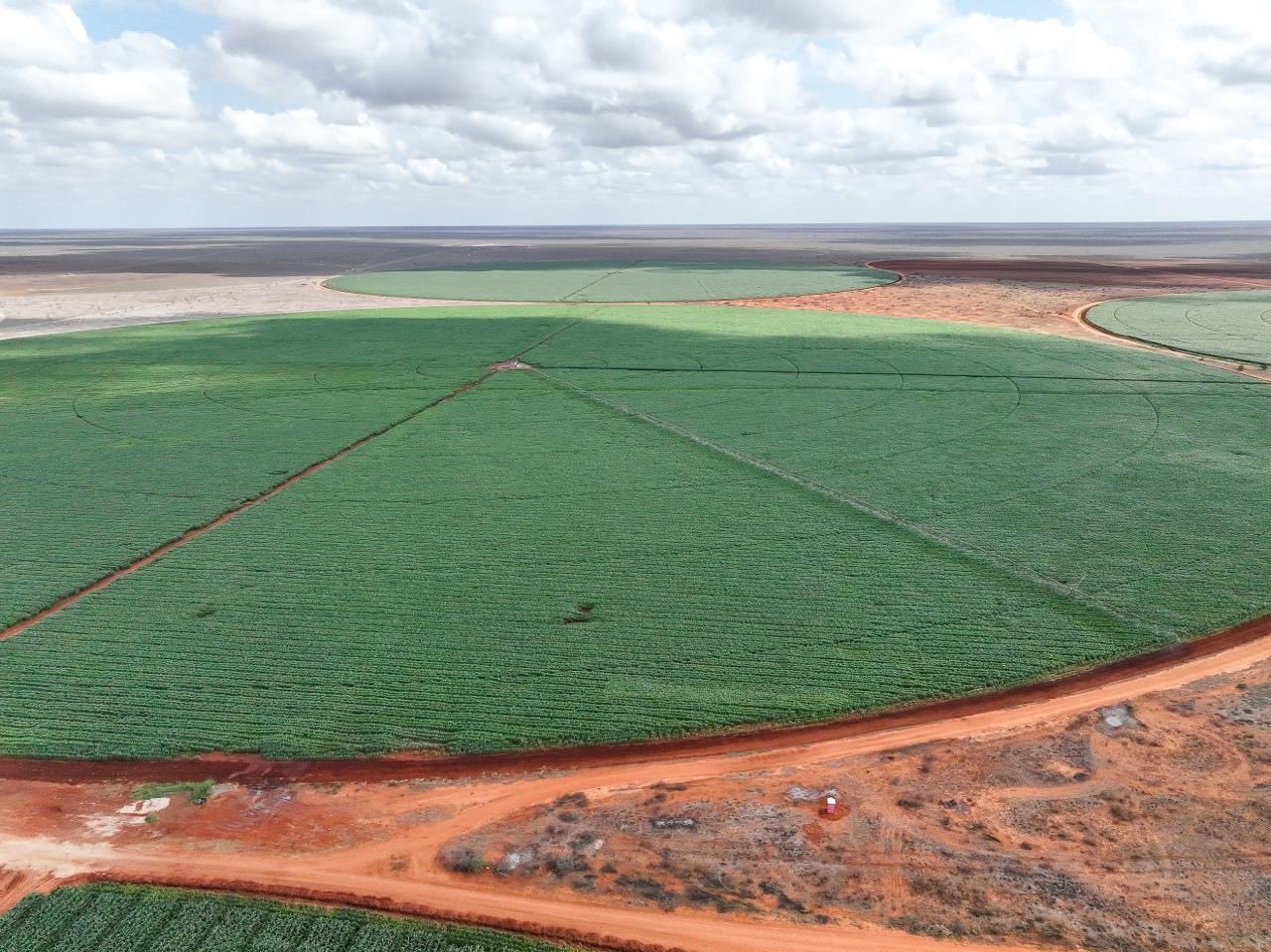
Irrigation Principal Secretary Ephantus Kimotho, who
accompanied the CS, said the success at Galana demonstrates that irrigation can
transform Kenya’s dry regions into productive agricultural zones.
“This project has proven that, with irrigation, arid and
semi-arid lands can play a key role in achieving food security,” he said,
adding that the government is engaging additional partners interested in
cultivating up to 180,000 acres in the area.
Parliamentary oversight
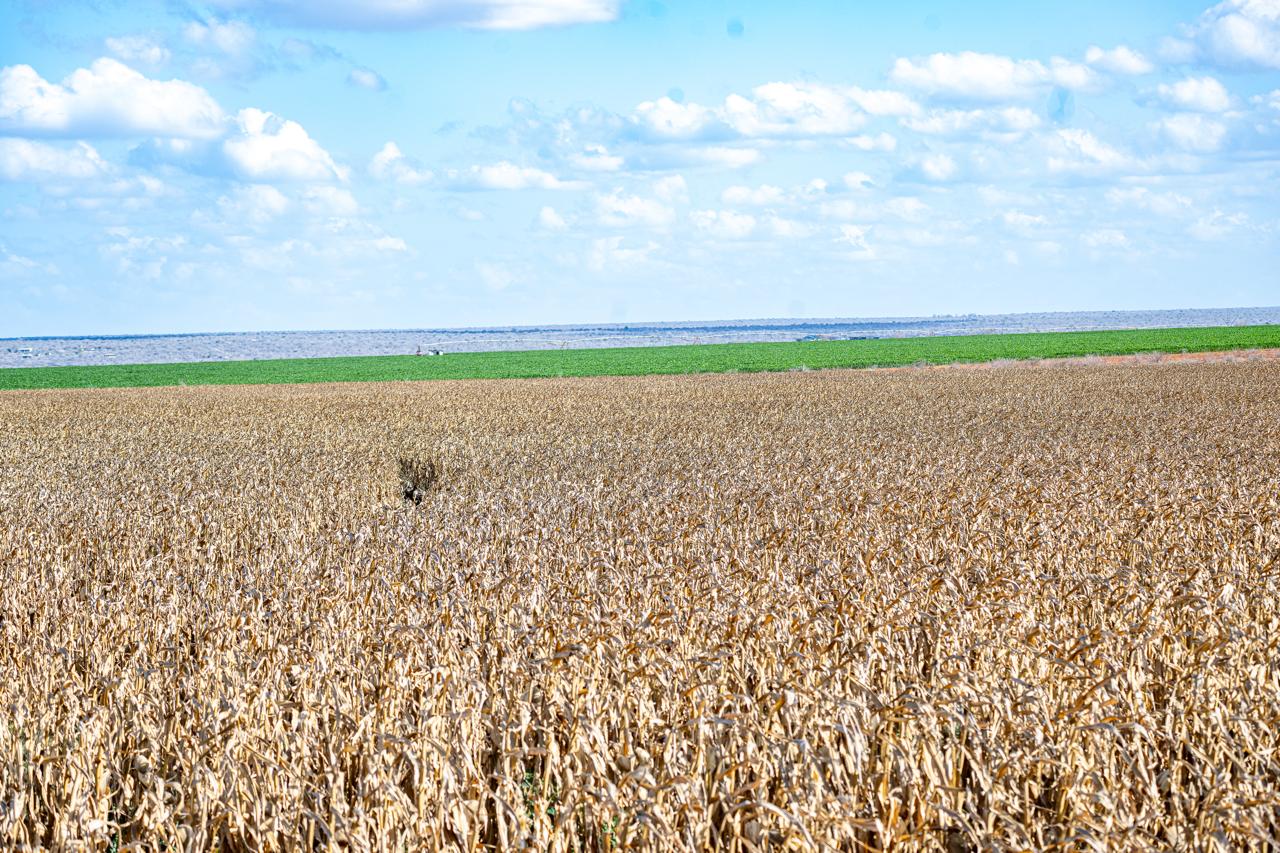
National Assembly Water, Irrigation and Blue Economy
Committee Chair Kangogo Bowen, who was also present, expressed satisfaction
with the progress of the project.
“We are pleased that the funds allocated by Parliament for
irrigation infrastructure at Galana have been well utilized,” he said. “We will
continue to support and allocate resources necessary to sustain this
initiative.”
Other senior officials present included National Irrigation Authority Chairman Gilbert Maluki and CEO Charles Muasya.
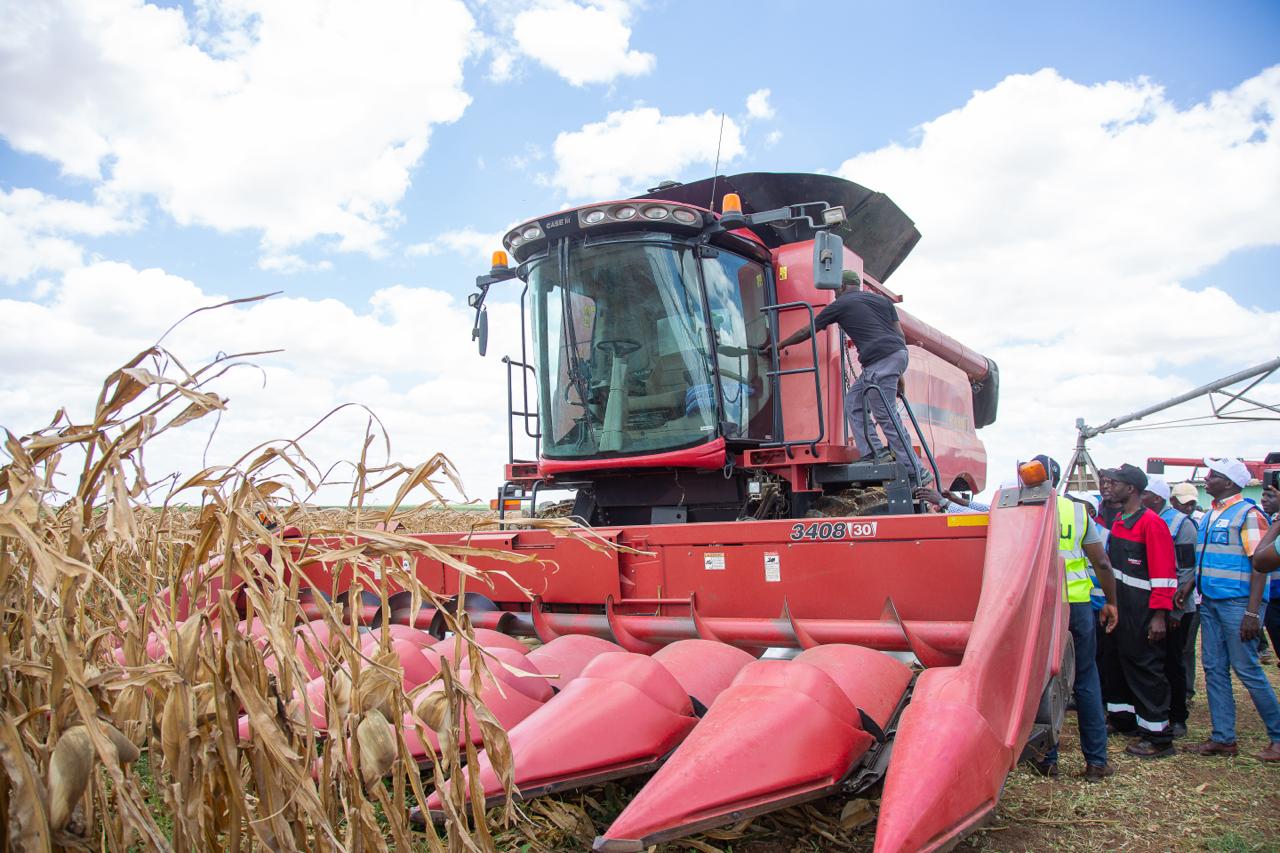
The first harvest at Galana Kulalu marks a new phase in
efforts to achieve sustainable, large-scale food production, signaling renewed
optimism for a project once written off as a costly failure.
Officials say it now stands as a model of how public-private
partnerships can drive agricultural transformation and reduce Kenya’s
dependence on food imports.
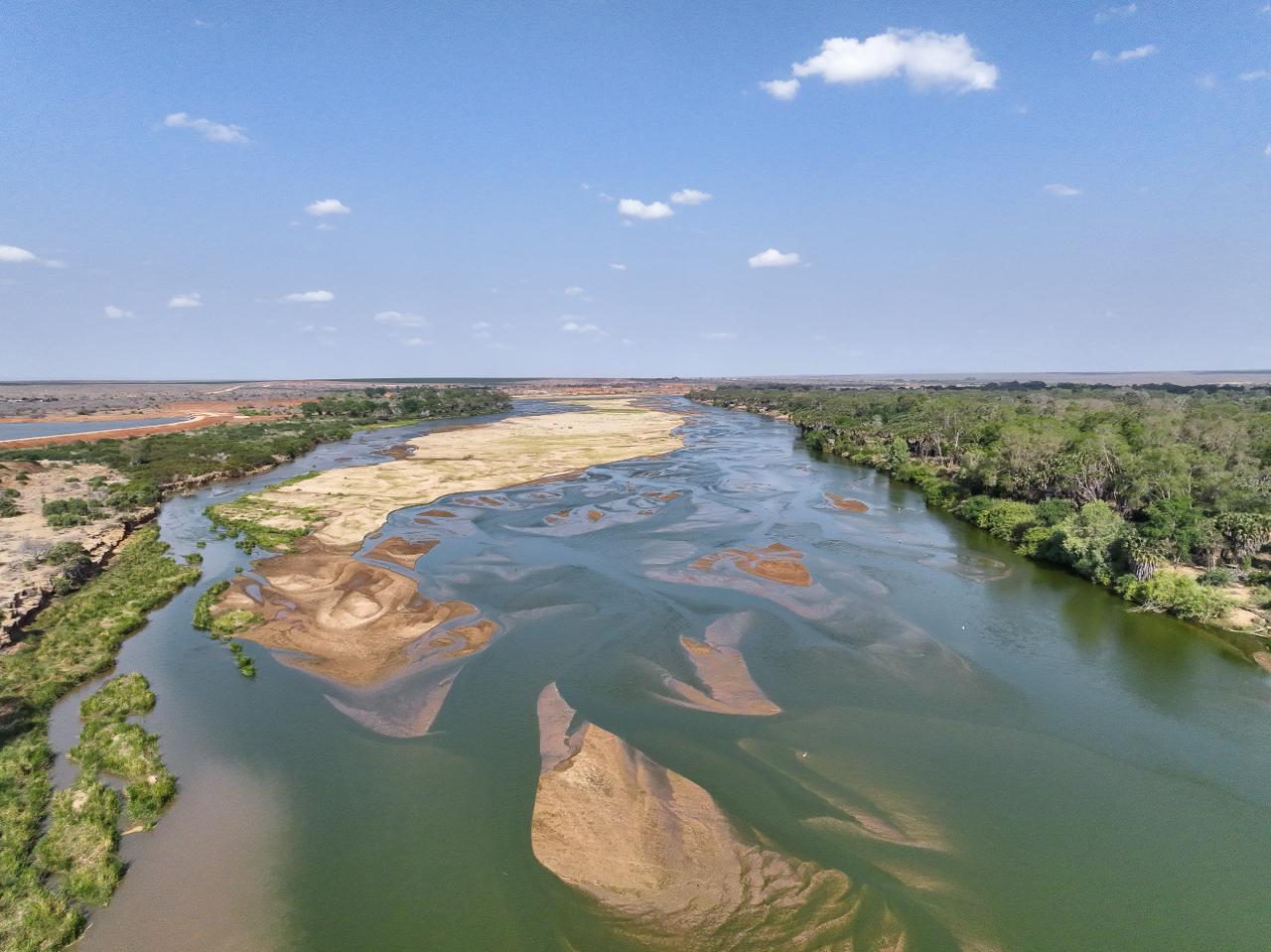






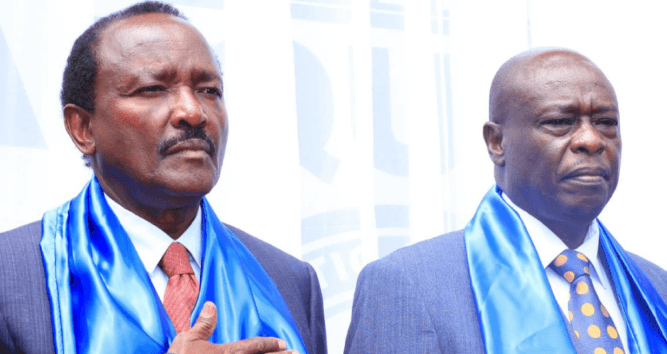



![[PHOTOS] Ruto launches Rironi-Mau Summit road](/_next/image?url=https%3A%2F%2Fcdn.radioafrica.digital%2Fimage%2F2025%2F11%2F6f6601a6-9bec-4bfc-932e-635b7982daf2.jpg&w=3840&q=100)




